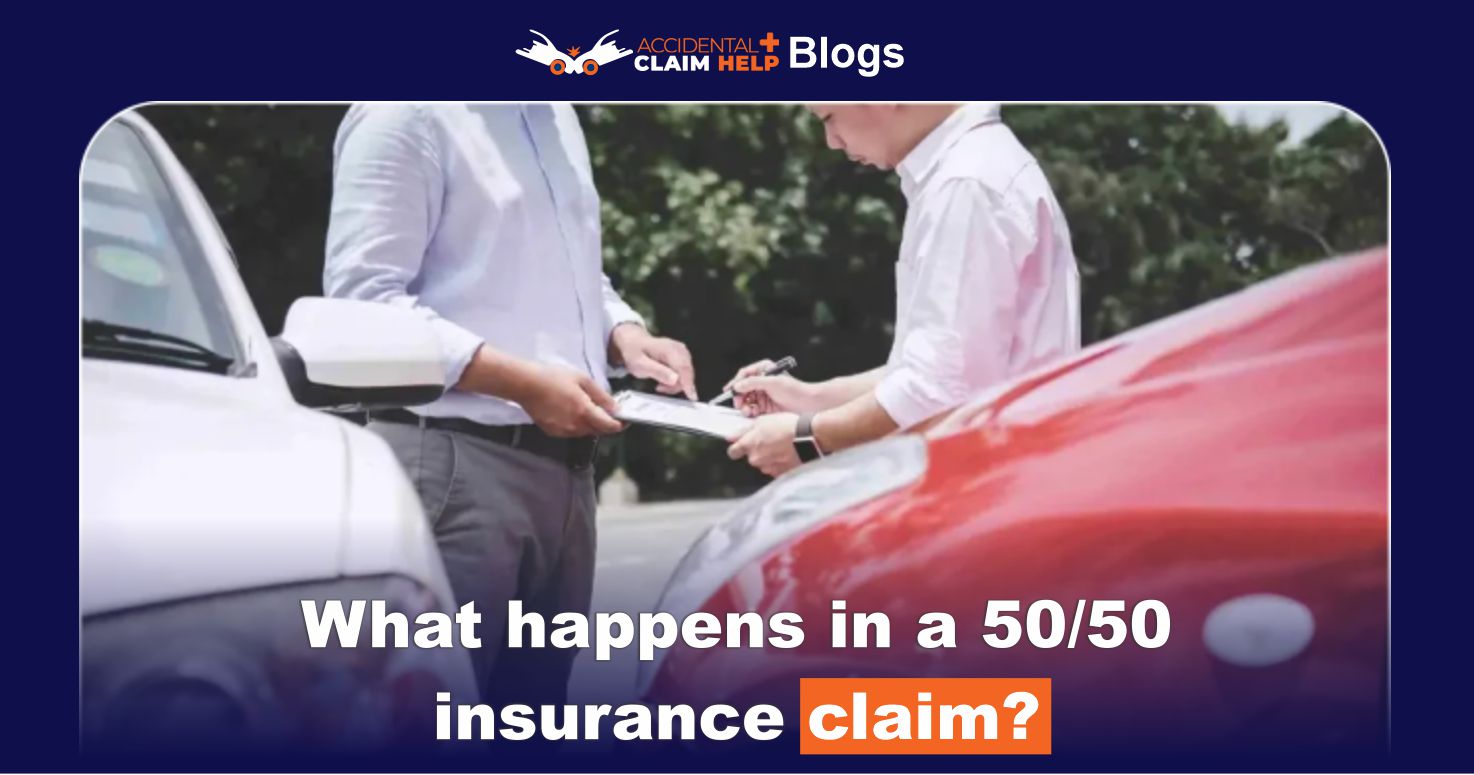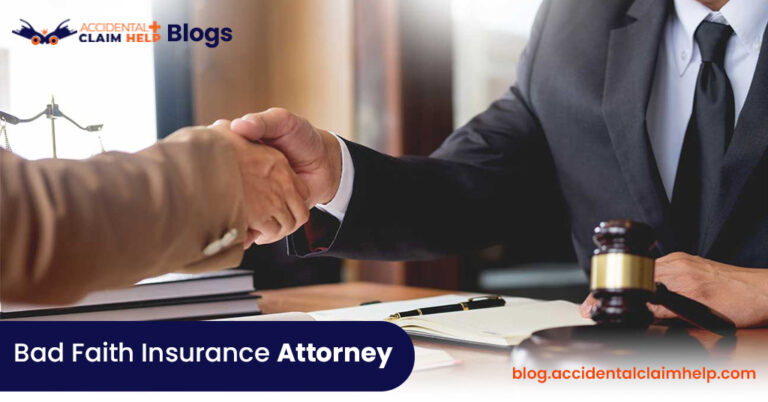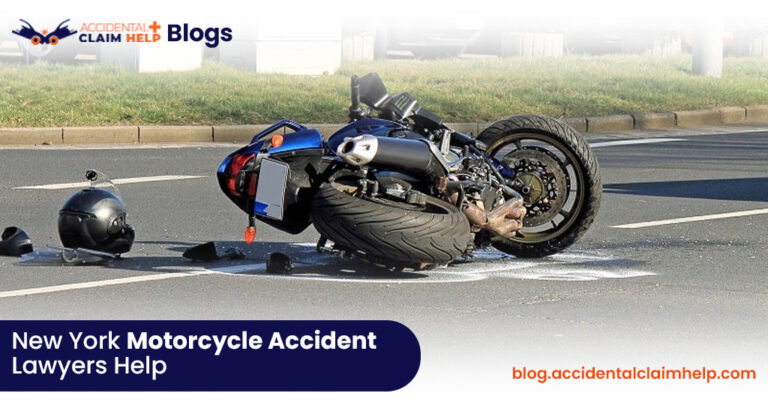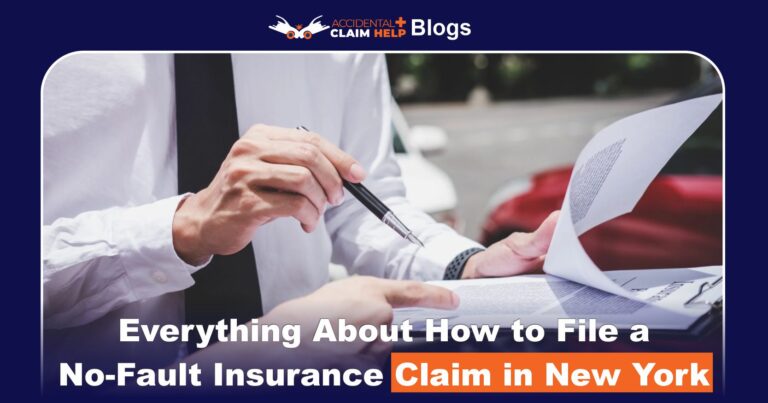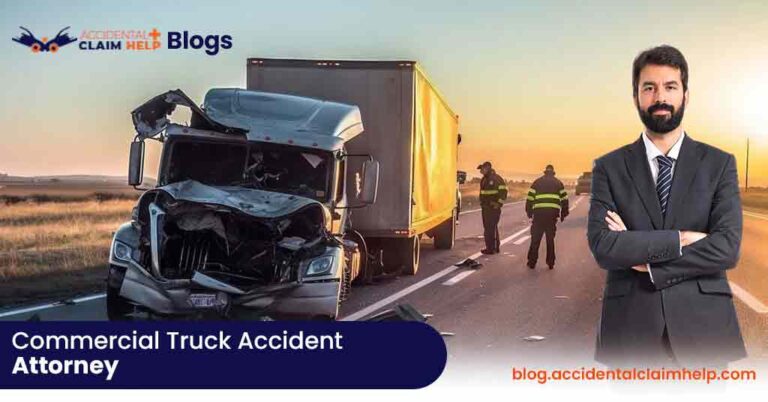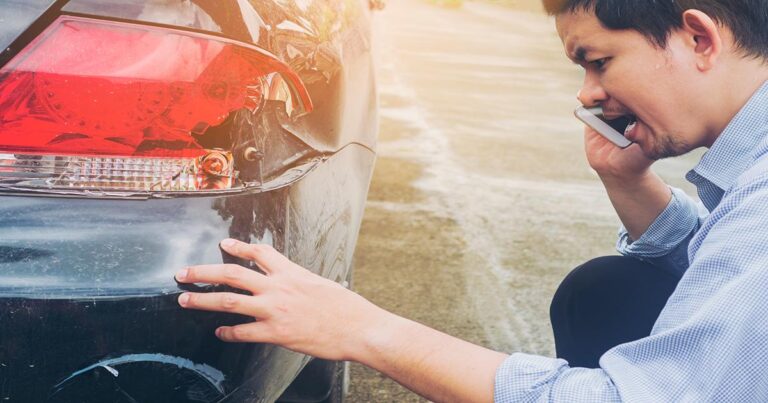What happens in a 50/50 insurance claim?
A 50/50 insurance claim refers to a crash where both drivers are judged equally responsible. In other words, each driver is deemed 50% at fault for the accident. This split arises under comparative negligence systems, where damage awards or payouts are divided based on each person’s share of blame. In practical terms, each party’s insurer will cover half of the other party’s damages. For example, if one driver had $20,000 in losses, the other driver would pay $10,000 of that cost, and vice versa. In states with pure comparative negligence (like California), even an 80/20 split still allows both sides to recover something; in a strict contributory state, any fault can bar recovery.
How Fault Is Determined in Shared-Accidents
Insurance adjusters and investigators play detective after a crash. They gather as much evidence as possible to reconstruct what happened and assign blame. Common sources include:
Police reports and citations. Officers at the scene usually write up the facts and note any tickets (speeding, failure to yield, etc.). A report can carry weight if it shows one driver broke a rule.
Witness statements. Bystanders or passengers can describe who violated the right-of-way or acted dangerously. Their unbiased accounts can tip the balance when fault is disputed.
Scene photos and video. Images of the crash site, skid marks, or nearby surveillance (including dashcam footage) help adjusters visualize the collision dynamics. Clear video can often decisively show which car moved first or ignored a stop.
Vehicle damage patterns. The location and extent of damage on each car can reveal impact angles and speeds. For example, a heavily crushed front bumper on one car and a dented rear of another suggests a different sequence than if both cars were equally damaged.
Driver statements. Each driver’s account is taken, but adjusters scrutinize them for consistency. People may unintentionally excuse their own mistakes, so insurers compare stories carefully.
Adjusters also apply basic traffic rules: for example, one guideline holds that drivers on a main travel lane have the right-of-way. If a car backing out into that lane causes a crash, the backer will usually get the blame. Courts have backed this up – one case found a driver who backed into a stopped car in a lot was “solely liable.” In short, even in a busy parking area the usual rules apply, and mere location (like “inside a parking lot”) does not automatically make it 50/50.
Comparative negligence laws determine what happens once fault is assigned. In most U.S. states, if you share fault, your compensation is reduced by your percentage of blame. For example, if you were awarded $10,000 but found 50% at fault, you’d only get $5,000. (Similarly, you’d owe half of the other side’s damages.) Under pure comparative rules, even if you are mostly at fault, you can still recover some damages (80% at fault means you recover 20%). Under modified rules, some states bar any recovery if you exceed a threshold (often 50%). A few states still use old contributory rules: if you were even 1% at fault, you might get nothing.

In all cases, fault is rarely declared arbitrarily 50/50 without reason. Adjusters and courts look at evidence and state law to split blame. If one driver clearly ran a red light or failed to yield, that driver will usually take most or all of the blame. But when both drivers did something wrong (like both rolling a stop sign or merging unsafely), insurers may indeed split fault evenly.
Shared-Fault Accident Examples
Real-world scenarios help illustrate how a 50/50 finding might come up:
Meeting in a lane: Imagine two drivers each back out of adjacent parking spots at the same time and collide. If neither driver had properly checked behind them, an insurer might say both are equally to blame. However, if one car was already in the driving lane and fully stopped, and another backed into it, the backing driver would likely be fully responsible.
Lane change collision: Two cars try to merge into the same lane simultaneously (for example, both signaling to merge) and crash. Each driver may argue that the other should have seen them. Adjusters often end up splitting fault 50/50 in such “we both should’ve watched” cases.
Four-way stop confusion: At an intersection with four stop signs, if both drivers sincerely thought it was their turn, fault might be shared. For instance, if one pulled out at the same time as the other from opposite stops, insurers may assign 50/50 unless a witness or camera shows who pulled out first.
Rear-end with mitigating factors: Normally, the rear driver is at fault. But suppose the front car had a broken brake light or swerved unexpectedly. If the lead driver’s behavior contributed (like sudden stops without working lights), the fault might be split. A legal resource notes that a rear-end crash with “mitigating factors” (like faulty equipment) can lead to shared responsibility.
Speed vs. signaling: In one example, one driver was speeding while another changed lanes without using a turn signal. Both acts are unsafe, so an adjuster might rule each driver “made a mistake” that helped cause the crash. In that case it could be treated as a 50/50 accident.
Each case is unique. Insurers will check who should have yielded or seen the other car. They also note any traffic citations: if one driver was ticketed for, say, illegal turn or speeding, that can tip fault in their favor. But without clear proof, sometimes companies meet in the middle with a 50/50 split.
Impact on Payouts, Costs, and Records
A 50/50 finding affects several aspects of the claim and your insurance:
Claim payouts. In an at-fault state, each driver’s insurer typically pays for the damages owed by their 50% share. In practical terms, each driver ends up paying for half of the other’s losses. For example, if you had $20,000 in damage and injuries, the other driver’s insurer would pay you $10,000. Meanwhile, you would owe $10,000 toward their $20,000 damages. (If one side’s insurer already paid a claim, often your insurer will settle up by paying their insured’s 50%.) If you carry collision coverage, you can also file with your own insurer for your 50% share, but then your deductible still applies (see below).
Deductibles. Your collision deductible is an out-of-pocket cost when you make a claim with your own policy. In a shared-fault accident, each driver typically pays their own deductible. For example, if you file with your insurer for damage to your car, you pay your deductible before the payout. Even if your insurer eventually recovers money from the other driver, they usually won’t give you back your deductible unless they pursue and win a subrogation claim. In short, you generally do not split one deductible between two people. As one source explains, “you still have to pay your deductible” on repairs even if fault is shared.
Insurance premiums. Being deemed at-fault usually raises your rates. One insurer notes that if you’re found at fault in a crash, your rate will “almost always go up” unless you have accident forgiveness. In a 50/50 crash, many insurers will still treat it like a partly-at-fault accident on both sides. That means both drivers might see a premium bump on their next renewal. (The increase could be smaller than for a clear 100% at-fault accident, but both insurers consider each driver partially responsible.) Indeed, sources warn that any history of accidents—even “no-fault” fender benders—can raise rates.
Claims history and driving record. The accident will likely appear on your claim history and possibly your driving record. Insurance companies share accident data, so a 50/50 crash still shows up as an accident involving you. Even if your state is no-fault (so PIP covered injuries), insurers still handle property damage through fault rules. Having an accident on your record can mean losing safe-driver discounts or affecting qualification for low-rate programs. Also, if you received any traffic citations, those may add points to your license independently of the insurance claim. In modified comparative states, being 50% at fault does not usually carry additional penalties on your license beyond possible tickets.

Lawsuits and disputes. A 50/50 split can sometimes lead to litigation, especially if one driver strongly disagrees. Since each driver technically owes half the other’s damages, one party might choose to sue the other (or counter-sue) for their share. In practice, many cases settle instead of going to court. But if an insurer refuses to pay or if one driver wants more money, you can file in small claims court or a higher court. For example, a guide notes that if you think the insurer’s fault decision is wrong, you can pursue the other half of damages in court – but you’d need strong proof the other driver was actually more at fault. It also advises that an accident with shared blame doesn’t end the conversation: you can challenge the decision with the insurer, file complaints with a state insurance department, or eventually hire an attorney if needed.
Different Policies and State Laws
The 50/50 concept mostly applies to auto insurance, but shared-fault can involve other coverages too:
Auto vs. property. In a car crash that also damages property (like a fence or mailbox), typically the car owner’s liability insurance pays for the property repairs. If fault is shared (say both cars pushed each other into a fence), an auto insurer might cover part of the property damage. Homeowners or landlords insurance sometimes covers first and then seeks reimbursement from auto insurers. In any case, auto liability limits and deductibles apply to vehicle damage. If you filed a claim under home or condo insurance for damage caused by someone’s car, your insurer might pay and then seek subrogation from the auto insurer.
At-fault vs. no-fault states. Most states are at-fault jurisdictions: the driver who causes a crash (or both drivers, if shared-fault) uses liability coverage to pay the other’s costs. However, in a no-fault state, each driver’s own Personal Injury Protection (PIP) covers their medical bills regardless of fault. In strict no-fault states, you usually cannot sue the other driver for minor injuries. But property damage (vehicle repairs, other property) is still handled by at-fault insurance. In other words, even in a no-fault state, a 50/50 car crash still involves liability insurance splitting vehicle or property damage costs. One source explains that in no-fault states, each party’s PIP pays their injuries, but the at-fault driver’s liability policy “typically pays for the other driver’s vehicle and property damage, just as they would in an at-fault state.” So shared-fault rules still apply for car repairs and property, even if medical claims go to PIP.
Other insurance types. Shared fault can arise in other contexts. For example, if a car accident damages someone’s home or business, that property insurance claim will consider the car driver’s fault (sometimes letting the homeowner’s policy pay first, then subrogating). Liability splits also apply in things like boating or recreational accidents: if two boaters collide and both are negligent, each insurer covers their share. But the basic idea is the same: compare negligence, divide the loss.
Disputing a 50/50 Fault Decision
If you think the 50/50 fault split is wrong, you have options. It’s important to actively manage the dispute:
Ask for an explanation. Request a written statement from the insurance adjuster detailing how they reached the 50/50 conclusion. You have a right to know which facts or laws they used. In some states (like California) consumers can even complain to the state’s Department of Insurance if the decision seems unfair.
Gather evidence. Strengthen your case by collecting everything that supports your side:
- Dashcam or video footage. This is often the clearest proof of who did what.
- Photographs. Take or obtain photos of all vehicles, the scene, skid marks, traffic signs, and any road conditions (ice, potholes).
- Police report. Get the official report from the responding agency. It may note citations or statements that help your claim.
- Witness statements. Contact any witnesses (pedestrians, other drivers, passengers). Written or recorded statements from neutral observers can counter the insurer’s account.
- Expert analysis (if needed). In complex crashes, an accident reconstruction expert can use evidence like damage angles and skid marks to show which driver was more negligent. Although costly, this can tip a 50/50 decision.
Submit a formal appeal. Write a clear letter or email to your insurance company explaining why you believe the fault split is incorrect. Attach your evidence and arguments. Keep your tone factual and professional. Clearly state which parts of the adjuster’s explanation you dispute and why.
Negotiate with the adjuster. Stay calm and stick to the facts when talking with the claims adjuster. Present your evidence point by point. For example, refer to photos or a witness who backs your version of events. Avoid admitting fault in your conversation: even saying “I shouldn’t have…” can be held against you. Ask questions like, “What evidence led you to place half the blame on me?” so you understand their reasoning. Sometimes simply pointing out a contradiction or offering stronger proof can shift liability. The goal is to get the adjuster to reconsider and reduce your fault percentage.
Escalate if necessary. If negotiations stall, you can take further steps. Possible actions include:
- Small Claims Court: For disputes over relatively small amounts (often property damage under a few thousand dollars), filing in small claims can force a determination of fault by a judge.
- Complaints and mediation: Many states have mediation programs or insurance ombudsmen who can review contested claims. You can also file a complaint with your state’s insurance regulator to put pressure on the insurer.
- Lawsuit: For larger claims or serious injuries, consult an attorney. An attorney can file a personal injury or property damage lawsuit, which formally assigns fault through the court system. A lawyer will guide you through discovery (exchanging evidence) and, if needed, trial. Note that if you already accepted a partial claim settlement, it may limit further action – so act promptly if you think you have a case.
Throughout the dispute, document everything. Keep records of all communications (letters, emails, phone calls – jot down date, time, and who you spoke with). If an adjuster says something on a call, follow up with an email summarizing what was discussed.
Differences Between Insurers and When to Seek Help
Not all insurance companies handle 50/50 splits the same way. Larger insurers often have standard procedures: they may automatically split fault 50/50 if evidence is ambiguous. Smaller or regional insurers might be more flexible in negotiations. If both drivers are insured by the same company, that insurer usually assigns one adjuster to the case and splits payments internally (still using fault percentages behind the scenes). If different insurers are involved, each company will defend its insured’s interests. In either case, it can sometimes help to contact both companies early, rather than going only through your agent.
You might need legal help in cases where:
- The damages are high: Large medical bills or vehicle losses can justify hiring an attorney to make sure you are treated fairly.
- Liability is hotly contested: If the fault split is complex or will dramatically change the payout, a lawyer can negotiate or even present evidence to adjusters on your behalf.
- Insurer acts unfairly: Every state has laws against unfair claims practices. If you suspect the insurer is acting in bad faith (for example, ignoring clear evidence or misapplying state law), a lawyer can help you understand your rights. In some cases, you may even have a bad-faith insurance claim against the company. California law, for example, specifically protects policyholders from “unfair claims handling.”
As one guide advises, an experienced auto accident attorney can “point out flaws in the insurance company’s reasoning” and negotiate more effectively. They can also help determine if filing a lawsuit is worthwhile. If you choose to get an attorney, look for one who specializes in car accident cases and insurance disputes. They often offer a free case review and work on contingency (getting paid only if you win). For minor incidents, the cost of a lawyer might not be worth it; for major injuries or expenses, legal help can make a big difference.
Tips to Protect Yourself
Even when an accident happens, you can take steps that make a 50/50 determination less likely or easier to contest:
- Gather evidence immediately. After making sure everyone is safe, take out your phone and photograph everything: all vehicles from multiple angles, license plates, debris, skid marks, nearby signs or traffic signals, and any contributing factors (like a faded stop sign or wet road). If you have a dashcam, save the video. These images and videos form the backbone of your case.
- File a police report. Even a minor fender-bender should be reported. An official report provides an impartial narrative and notes any citations. In some jurisdictions, a report is legally required if there’s injury or significant damage.
- Collect witness info. If anyone saw the crash – a pedestrian, another driver, a shop owner – politely ask for their name and phone number. Witnesses who aren’t involved have no reason to lie and can confirm exactly what they saw.
- Exchange insurance information. Get the other driver’s name, phone number, license, and insurance company and policy number. Also get names and plates of any vehicles that were hit. Do not discuss blame; just exchange the necessary info calmly.
- Avoid admitting fault. Be truthful, but careful with words. You can say “I’m sorry this happened,” which is often legally okay, but avoid phrases like “It’s my fault” or “I should have stopped” – such statements can be used against you. Let the evidence speak first.
- Notify your insurer promptly. Call your insurance company (or report online) as soon as you can, even if you think you were partly at fault. In most states you must report accidents within a certain period. Prompt notification means your insurer can start collecting evidence (like ordering the police report) and will inform you of any deadlines.
- Keep all records. Save copies of everything: medical bills, tow receipts, repair estimates, emails with adjusters, and notes from phone calls. Having organized documentation makes disputes easier to win.
- Consider safety nets. Check if you have accident forgiveness or vanishing deductible coverage. Some insurers forgive the first accident so it won’t raise your rate. Others reduce deductibles over time. These features won’t change fault, but they can soften the financial blow.
- Think about a dashcam. A forward- or rear-facing camera in your car can record interactions leading up to a crash. Many drivers use them as a “witness” that works for them 24/7. In a 50/50 scenario, dashcam footage can be especially powerful evidence.

